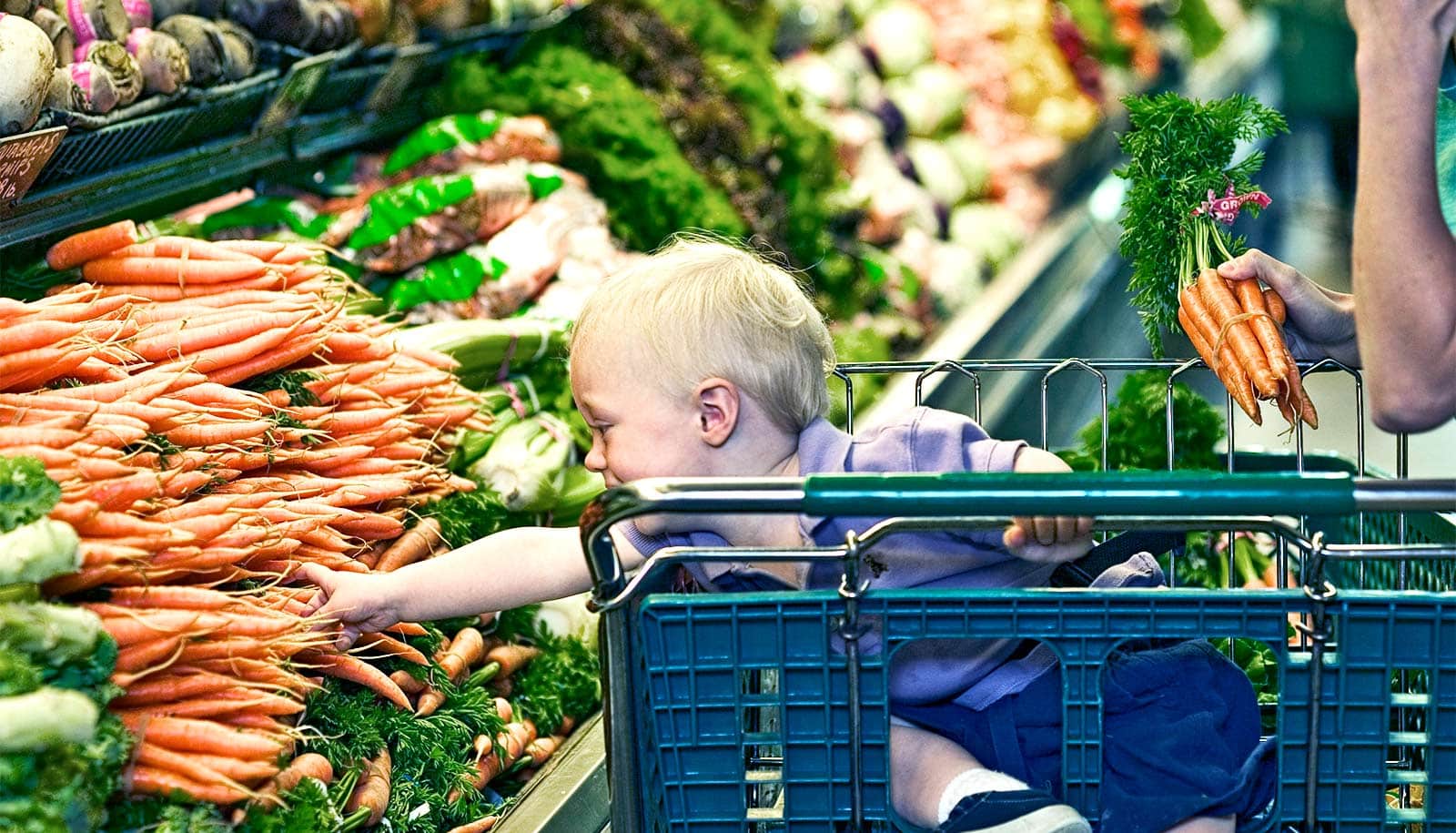Middle- and upper-income households spend more on fresh fruits and vegetables after having their first baby, according to new research. But the same isn’t true for lower-income families, the new study finds.
The findings suggest that this key moment in parents’ lives could be useful for creating interventions that support healthier eating habits.
“When people become parents, they may be more likely to change their eating habits,” says lead author Betsy Cliff, who recently received her doctoral degree from the health management and policy department at the University of Michigan School of Public Health. “This period could be a good target for programs that encourage greater produce consumption.”
As reported in the Journal of Nutrition Education and Behavior, the proportion of new parents’ grocery budget spent on fruit increased 21 percent and the proportion spent on vegetables increased 10 percent compared to before they were parents.
The higher spending on fruits and vegetables was due to an increase in money spent on fresh produce; there was no meaningful change in expenditures of canned or frozen produce.
“The effect is driven by higher income households. Lower income households are not changing their produce purchases when they become parents.”
When researchers looked closer, they only saw the increase in middle and higher income families, those earning 185 percent above the poverty level (or above $39,000 for a family of three in 2019).
“The effect is driven by higher income households. Lower income households are not changing their produce purchases when they become parents,” Cliff says. “This difference in produce purchases based on income shows one potential source of disparities in nutrition and could contribute to health consequences down the line.”
While taking a marketing class, Cliff says she came across literature pointing out that some companies could predict when people are pregnant based on the purchases they make. For example, the article noted that if someone goes from purchasing scented to unscented lotion she might be pregnant. The discussion centered on shaping people’s preferences based on where they are in their lives.
“I was thinking about that and wondering if it could apply to a public health context, too,” Cliff says. “Food purchases are some of the most consistent purchases we make in our lives and I was wondering if there was a habitual change at pregnancy—at your first child because it’s such a huge change—that we might be able to leverage for better public health.”
For the study, researchers used a large nationally representative sample called the Nielsen Homescan Consumer Panel dataset. Every year, the consumer panel collects data from between 40,000 to 60,000 households nationwide. Participants use at-home scanners to record purchases. Nielsen also records number of children, race/ethnicity, household income, and other demographic information.
The study looked at participants from 2007 to 2015 who were most likely to become parents, and included data from 21,939 households of adults ages 25-49.
Nielsen supplied product codes, which the researchers used to categorize each scanned purchase as grocery, and then further categorize them by type of produce and storage mechanism (fresh, canned, frozen, other). In all, the researchers included 73,672 observations in the study.
In the 508 households that became new parents, researchers found they increased the percentage of their budget that they spent on produce to 12 percent, up from 10 percent.
Cliff says that while there are some limitations to the study—they could track what people are buying but not what people are actually eating, for example—she hopes the findings will help others come up with interventions for parents, regardless of their socioeconomic status.
“For the lower-income households, they’re going through some similar life changes as the higher-income households are,” she says. “One interesting next step would be to figure out why their produce expenditure is not changing.”
Senior author Julia Wolfson, assistant professor in health management and policy, agrees.
“Pregnancy is a key life event, and we know that pregnancy and the first 1,000 days of life are critical for establishing a healthy trajectory,” she says. “Food, and fruits and vegetables in particular, are particularly important during those early years.
“The results from this study highlight the importance of continuing to invest in programs and policies that help low-income households access fruits and vegetables, particularly during pregnancy and immediately following the birth of a child.”
Source: University of Michigan

